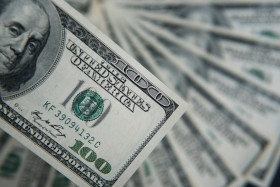The US dollar slumped midweek as the US and China officially signed the first phase of a comprehensive trade agreement. This comes as December inflation was subdued and business optimism fell short of analystsâ expectations. Still, the greenback is trading relatively higher against a basket of currencies this month.
It took 18 months, but Washington and Beijing finally signed phase one of a trade deal. President Donald Trump hosted Vice Premier Liu He at the White House on Wednesday to officially sign the agreement. The near-90-minute event featured the president outlining some of the components inside the deal and thanking his administration, Republicans in Washington, and private business leaders for their hard work.
President Trump said the first phase offers âeconomic justiceâ to American workers, farmers, and families and removes market barriers to a wide array of industries, including energy and agriculture. He did attend the ceremony, but President Xi Jinping sent a letter that was read by He.
Xi wrote:
Provisions of the phase one trade agreement between China and the US are good for China, for the U.S., and for the whole world. It shows our two countries have the ability to act on the basis of equality and mutual respect and working dialogue without confrontation and properly handle and effectively resolve our issues.
I believe under our leadership, US-China relations will deliver more results and provide greater benefits for our peoples in the years ahead.
Details are still coming out, but we do know that the Treasury Department removes China from its list of currency manipulators. It also forces Beijing to abolish technology transfers in exchange for market access and impose intellectual property reforms.
The US, meanwhile, will slash 15% tariffs on $110 billion in Chinese goods in half. However, the 25% tariffs on $360 billion in imports will remain intact. But the US could decrease or eliminate tariffs if China adheres to the provisions of the deal. The tariffs could also be gone once phase two is completed. It is unclear when phase two will begin.
The event helped the Dow Jones Industrial Average and Nasdaq Composite touch record highs. But it did not help the greenback as the US Dollar Index tumbled 0.15% to 97.22, from an opening of 97.38.
On the data front, the producer price index (PPI) and the core PPI each rose 0.1% in December. According to the Mortgage Bankers Association (MBA), mortgage applications soared 30.2% in the week ending January 10, up from the 13.9% jump in the previous week. The National Federation of Independent Business (NFIB) optimism index clocked in at 102.7 last month, falling short of the estimate of 104.
The USD/CAD currency pair fell 0.09% to 1.3050, from an opening of 1.3063, at 18:01 GMT on Wednesday. The EUR/USD jumped 0.21% to 1.1152, from an opening of 1.1128.
If you have any questions, comments, or opinions regarding the US Dollar, feel free to post them using the commentary form below.
